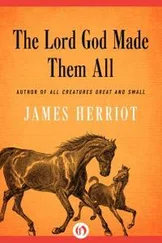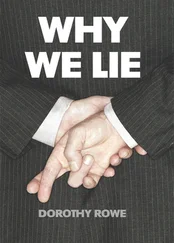Джеймс Миченер - The Source
Здесь есть возможность читать онлайн «Джеймс Миченер - The Source» весь текст электронной книги совершенно бесплатно (целиком полную версию без сокращений). В некоторых случаях можно слушать аудио, скачать через торрент в формате fb2 и присутствует краткое содержание. Год выпуска: 1983, ISBN: 1983, Издательство: Random House, Inc., Жанр: История, на английском языке. Описание произведения, (предисловие) а так же отзывы посетителей доступны на портале библиотеки ЛибКат.
- Название:The Source
- Автор:
- Издательство:Random House, Inc.
- Жанр:
- Год:1983
- ISBN:9780449211472
- Рейтинг книги:5 / 5. Голосов: 1
-
Избранное:Добавить в избранное
- Отзывы:
-
Ваша оценка:
- 100
- 1
- 2
- 3
- 4
- 5
The Source: краткое содержание, описание и аннотация
Предлагаем к чтению аннотацию, описание, краткое содержание или предисловие (зависит от того, что написал сам автор книги «The Source»). Если вы не нашли необходимую информацию о книге — напишите в комментариях, мы постараемся отыскать её.
The Source — читать онлайн бесплатно полную книгу (весь текст) целиком
Ниже представлен текст книги, разбитый по страницам. Система сохранения места последней прочитанной страницы, позволяет с удобством читать онлайн бесплатно книгу «The Source», без необходимости каждый раз заново искать на чём Вы остановились. Поставьте закладку, и сможете в любой момент перейти на страницу, на которой закончили чтение.
Интервал:
Закладка:
Perhaps Ur’s daughter could in time have diminished the distance between the two, for she was patient and the dog was inquisitive, but one day as she worked in the wheat fields, unmindful of the beast yet aware that he was watching her, she heard a human voice utter a cry of victory which was drowned by the piercing wail of a dog, and she dashed with passion to the rock to find that her animal—her proud, wild dog of the forest—had been slain by a spear which had passed through the chest. The dog lay inert, his brown eyes still open in sad surprise, but at the far edge of the rock stood a tall young man shouting exultantly, “I’ve killed the wild dog!” And she leaped at him with an anguish which only the bereaved can know, and began beating on him and driving him from the rock.
… THE TELL
With Vered Bar-El absent in Chicago, Cullinane was free to direct his whole attention to the job of drafting a preliminary report on the year’s campaign, but in doing so he found that any sentence he wished to use in describing how early society came into being was apt to be vague unless each word was carefully explained. The simplest phrase required qualification plus a warning that it could not have meant in the year 9000 B.C.E. what it meant today. For example, once when he was trying to describe how his imaginary family dressed, he wrote of the father, “He wore skins,” but as soon as the three words appeared before him on the paper he realized that each, to be intelligible, required special definition.
He , the pronoun used to identify one man from among many—the singular human differentiated from all others, with a will of his own, a personal destiny and a unique personality—was a concept which must have come late in human development, and when Cullinane used it as he did, it raised various philosophical problems. Originally there had been men and women dwelling in a mass in caves, and of course there had been a distinction between male and female, but within those two categories there could not have been much individualization. A child was born and manifested no special characteristics. At fourteen or fifteen he was strong enough to muscle his way into full participation. At thirty he was an old man. And when his first tooth fell he could feel the claw of death at his throat, for the day could not be far off when he would no longer be able to fight for his food or rip it from the bone with his fangs. If he survived till forty he was a white-haired sage who existed only because some tender-hearted woman foraged his food for him. He lived and died within a blurred, undifferentiated destiny, and for nearly a million years in Israel his going was not even marked with a burial of any kind. The identification of he , the unique human being, probably resulted from an expanding social order in which categories became more clearly defined. A man began to perform a certain job or to live in a specified portion of the communal cave. He thus existed in relationship to known verities and in time began to partake of recognizable characteristics, even to develop them in order to fulfill the requirements of a burgeoning social order. As a result, he developed a personal space that moved with him and was his, a function that was his, and a manner of behavior that distinguished him. Most important of all, he painfully and with some terror, Cullinane supposed, began to develop, say, twenty thousand years ago, a way of thinking that was characteristically his, and in group meetings in the cave he began to defend the results of that thinking. There was an additional implication in the word he: it signified that the bearer of the pronoun existed in some kind of relationship to the forces of nature that surrounded him; he knew his place, as it were, and developed a strong sense of private property, and this discovery must have come very late indeed—within the last ten or twelve thousand years, Cullinane guessed—in what might be termed the age of speculation. Prior to that, men had known that an atmosphere of power existed around them, but they had also known that they were impotent to affect it. Man and storm coexisted in a kind of armed truce; with animals there was open warfare. So far as Cullinane knew, the dog on whom so much of man’s early pastoral life depended had been domesticated in other parts of the world as early as 12,000 B.C.E., but at Makor not until sometime around 7000 B.C.E., while the cow and the goat, which the dog was to tend and upon which civilization so strongly relied, were to come much later. It was doubtful, Cullinane thought, if man had appreciated his capacity to influence the future and his animals’ incapacity to do so until quite late. It was instructive and accurate to imagine earliest man as living for most of his first two million years within an insulation of stupidity, not fully differentiating himself from the physical world, the spiritual world, or the world of the other sentient animals. “So when I use the word he to specify one man living in one house by one well, I am speaking of an intellectual revolution so enormous in magnitude that I have not the words to describe it,” Cullinane wrote. He put his pen aside and mused: How I should like to see the eyes of that man who first brought wheat into cultivation. The first man to tame a wild dog. Or to arrange for the giving of his daughter in a formalized kind of marriage. Or to discover that in the high places a god was standing.
Wore , as Cullinane used the word, implied a whole scale of social judgments and was the end result of many moral decisions. Why did men decide to wear anything? How much of that decision sprang from cold or from a desire to inherit the power of animals by wearing their skins; how much from a need for sexual propriety, as suggested in Genesis? When some men began to wear something, what kind of pressure did they apply against others to make them do the same? At what point did women discover that they were more functional as women if they wore some ornament to differentiate themselves from men? This last was more significant than the layman would like to think, for beads had been found in Israel dating as far back as 40,000 B.C.E. and evidences of intentionally prepared perfume were common before the invention of writing. The businessman in Chicago who objects to his wife’s expenditures on jewelry should visit a prehistoric cave, he thought. There he’d find that his wife is in the grand tradition. A woman requires jewelry as a man requires food. Still, he thought, it was remarkable and a mystery not yet explained why contemporary men, who could watch the birds and animals and see that it was the male who was gaudy in decoration, had decided that among human beings this fundamental law should be reversed. He supposed that this could be one of the essential differences between man and animals: the former beautify their females. As to the components of utility, ritual and taboo that went into the formulation of a concept like wear , he preferred not to speculate. When enough sites had been excavated and enough research completed, some scholar would be able to specify how those concepts had developed; meanwhile he didn’t know, but almost every word symbolizing a value judgment had a unique history dating back some hundred thousand years before the age when man first learned to speak. To be specific, he still pondered what force had given the categorical imperative, “Wear clothes,” its social effectiveness. Vaguely he remembered that as an officer in the hottest and most humid parts of the Solomon Islands he had commented on the fact that all men and women had worn some kind of clothing, “and it certainly wasn’t because they needed to keep warm!”
Skins , the last word in the exacting sentence, pitched the reader into the imprecise origins of technology. At what age of man’s development did some technician discover that the skin of an animal could be scraped clean of fleshy particles, dried in the sun, rubbed with fat and the juice of oak galls, and crudely tanned into a pliable substance adaptable to the human form? Really, Cullinane reflected, so many problems are raised in that sentence that only a super-mechanic like Thomas Edison could find a place to begin. It probably took about fifty thousand years of step-by-step accumulation of experience until the complicated process was mastered. He repeated the phrase: fifty thousand years. It was an incomprehensible amount of time, ten times as long as man’s entire written history, and it was but a fragment of the total time that men had grappled with the problem skins. All Cullinane knew for sure was that sometime around 40,000 B.C.E. the men of the Mount Carmel caves had produced flint stones with serrated edges that could be used for scraping skins, so it was likely that they had at least begun the tanning process. But the word skins conjured up related technical problems that were even more fascinating. It’s probable, Cullinane reasoned, that our people at Makor in 9000 B.C.E. wore skins that fitted the body. Sewn together, if you like. Now where did they get the needles? The thread? And most important of all, the concept? It was the latter that was crucial, for once a group of people had the intelligence to say, “Let’s sew our skins,” ways would surely be found to do the sewing. But who had first proposed, “Let’s sew”? He guessed that it had been some woman watching a bird build its nest, sewing the strands of straw back and forth and tucking the ends in place with her sharp bill. Once this process was understood it was relatively simple—Say it took fifty thousand years, Cullinane mused—for the woman’s husband to cut a flint so that it could be used as an awl. Or some man had found a deer’s bone that could be sharpened, or a fragment of human shin that would serve nicely as a needle. In any case, over a period of time staggering to imagine, men had acquired their trial-and-error technology, and if today one could visualize the persistent will required to bring such a thing as a skin to the point of utility he would be made humble by the years, the toil of awkward fingers, the blockades of mind, and the yearning for accomplishment that underlay even the simplest process.
Читать дальшеИнтервал:
Закладка:
Похожие книги на «The Source»
Представляем Вашему вниманию похожие книги на «The Source» списком для выбора. Мы отобрали схожую по названию и смыслу литературу в надежде предоставить читателям больше вариантов отыскать новые, интересные, ещё непрочитанные произведения.
Обсуждение, отзывы о книге «The Source» и просто собственные мнения читателей. Оставьте ваши комментарии, напишите, что Вы думаете о произведении, его смысле или главных героях. Укажите что конкретно понравилось, а что нет, и почему Вы так считаете.
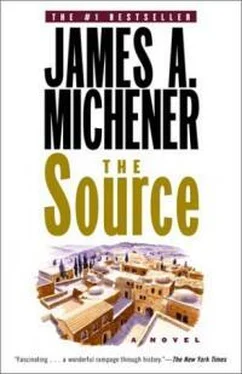
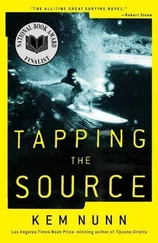



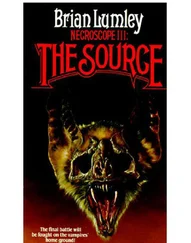
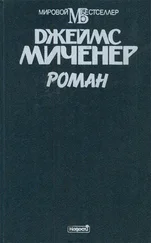
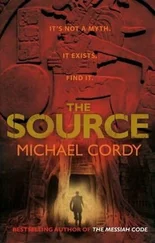
![Джеймс Купер - Пионеры, или У истоков Саскуиханны [The Pioneers, or The sources of the Susquehannah]](/books/395797/dzhejms-kuper-pionery-ili-u-istokov-saskuihanny-t-thumb.webp)
